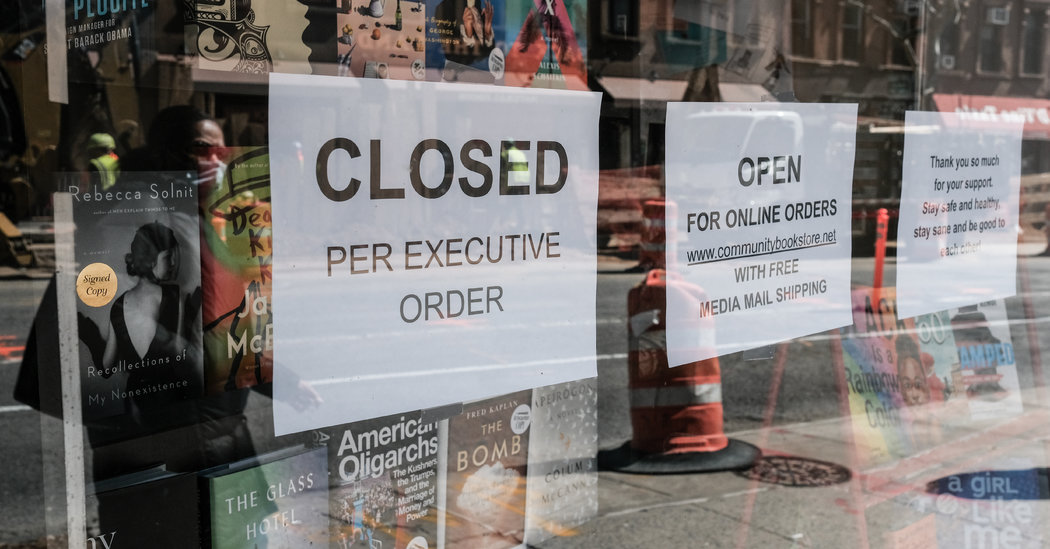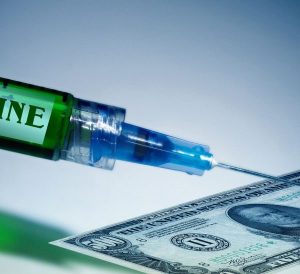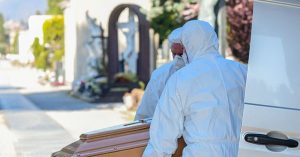When the coronavirus spread across the United States this spring, most of the entertainment industry went into hibernation, as movie theaters, concert halls, museums, Broadway and film production sets shut down. Publishing, however, seemed more resilient: Books remained available online and stand apart as an art form that can be easily produced and consumed in isolation.
But even the publishing world hasn’t been immune to the economic fallout from the pandemic. U.S. book sales across all categories fell more than 8 percent in March, compared with March 2019, a decline that reflected the challenges publishers face in a ravaged retail landscape.
The steepest declines were in educational publishing, a likely result of the mass closures of schools and colleges. Revenue from prekindergarten through 12th grade instructional materials was half what it was a year ago, while course materials for higher education fell more than 8 percent. Books from university presses saw a decline of more than 21 percent.
It’s still unclear how severely the industry will be affected by the ongoing crisis. The data from March only revealed the impact of the first few weeks of the shutdown. But sales for commercial publishers held up surprisingly well in March, despite the wave of bookstore closures across the country. Trade publishers’ revenues were steady, with a slight increase of nearly 1 percent, and grew by 2.6 percent during the first three months of 2020 compared with the same period last year.
The sales figures, which were released Tuesday by the Association of American Publishers, a group that tracks revenue from around 1,360 publishers, provided a snapshot of the industry at a moment of upheaval. Some categories, like digital audio, which has been one of the fastest-growing formats in recent years, seemed almost pandemic-proof, with a jump of 15 percent. Downloaded audio for children grew by nearly 50 percent, as parents who are sheltering at home with children turned to audiobooks for entertainment. Somewhat surprisingly, e-book revenues dropped by nearly 5 percent, and print revenues grew by more than 1 percent.
The decline was in line with an overall sharp downward trend for retail in March, which fell 8.7 percent from the previous month, the most dramatic decline in three decades. The picture in April was even more bleak. Retail sales overall fell by more than 16 percent last month, with particularly stark declines for clothing stores, home and furniture stores and restaurants and bars. (Publishers’ revenues for April are not yet available from the Association of American Publishers.)
Bookstores were also hit hard by the shelter-in-place orders across the country. According to estimates released last week by the census bureau, bookstore sales fell by more than 33 percent in March, and were down more than 11 percent this year compared to the first three months of 2019.
There are hopeful signs that after a steep drop driven by bookstore closures and economic uncertainty, publishers are beginning to see evidence of a recovery, with strong sales for commercial fiction and children’s nonfiction. Readers flocked to new releases by brand name authors like John Grisham, Stephen King and Suzanne Collins. Publishers have also seen strong sales online, and at big box stores like Walmart and Target, which were deemed essential businesses and never fully shut down.
With states across the country beginning to lift their stay-at-home orders, chain bookstores like Books-A-Million and Barnes & Noble are opening up for in-store shopping again, while a growing number of independent bookstores are opening for curbside pickup, and in some cases are opening for customer browsing.
“There’s really a strong lineup right now of offerings,” said Scott Kappler, the chief marketing officer at Books-A-Million, who cited strong sales in puzzles and games, educational resources, and commercial fiction.
There are also indications that print sales are picking up. Print sales rose 10.5 percent, to more than 13 million units, for the week ending in May 9 compared to the prior week, and were up by about 10 percent over the same week last year, with increases in both fiction and nonfiction, according to NPD BookScan.
-
Frequently Asked Questions and Advice
Updated May 20, 2020
-
How many people have lost their jobs due to coronavirus in the U.S.?
Over 38 million people have filed for unemployment since March. One in five who were working in February reported losing a job or being furloughed in March or the beginning of April, data from a Federal Reserve survey released on May 14 showed, and that pain was highly concentrated among low earners. Fully 39 percent of former workers living in a household earning $40,000 or less lost work, compared with 13 percent in those making more than $100,000, a Fed official said.
-
Is ‘Covid toe’ a symptom of the disease?
There is an uptick in people reporting symptoms of chilblains, which are painful red or purple lesions that typically appear in the winter on fingers or toes. The lesions are emerging as yet another symptom of infection with the new coronavirus. Chilblains are caused by inflammation in small blood vessels in reaction to cold or damp conditions, but they are usually common in the coldest winter months. Federal health officials do not include toe lesions in the list of coronavirus symptoms, but some dermatologists are pushing for a change, saying so-called Covid toe should be sufficient grounds for testing.
-
Can I go to the park?
Yes, but make sure you keep six feet of distance between you and people who don’t live in your home. Even if you just hang out in a park, rather than go for a jog or a walk, getting some fresh air, and hopefully sunshine, is a good idea.
-
How do I take my temperature?
Taking one’s temperature to look for signs of fever is not as easy as it sounds, as “normal” temperature numbers can vary, but generally, keep an eye out for a temperature of 100.5 degrees Fahrenheit or higher. If you don’t have a thermometer (they can be pricey these days), there are other ways to figure out if you have a fever, or are at risk of Covid-19 complications.
-
Should I wear a mask?
The C.D.C. has recommended that all Americans wear cloth masks if they go out in public. This is a shift in federal guidance reflecting new concerns that the coronavirus is being spread by infected people who have no symptoms. Until now, the C.D.C., like the W.H.O., has advised that ordinary people don’t need to wear masks unless they are sick and coughing. Part of the reason was to preserve medical-grade masks for health care workers who desperately need them at a time when they are in continuously short supply. Masks don’t replace hand washing and social distancing.
-
What should I do if I feel sick?
If you’ve been exposed to the coronavirus or think you have, and have a fever or symptoms like a cough or difficulty breathing, call a doctor. They should give you advice on whether you should be tested, how to get tested, and how to seek medical treatment without potentially infecting or exposing others.
-
How do I get tested?
If you’re sick and you think you’ve been exposed to the new coronavirus, the C.D.C. recommends that you call your healthcare provider and explain your symptoms and fears. They will decide if you need to be tested. Keep in mind that there’s a chance — because of a lack of testing kits or because you’re asymptomatic, for instance — you won’t be able to get tested.
-
Should I pull my money from the markets?
That’s not a good idea. Even if you’re retired, having a balanced portfolio of stocks and bonds so that your money keeps up with inflation, or even grows, makes sense. But retirees may want to think about having enough cash set aside for a year’s worth of living expenses and big payments needed over the next five years.
-
How can I help?
Charity Navigator, which evaluates charities using a numbers-based system, has a running list of nonprofits working in communities affected by the outbreak. You can give blood through the American Red Cross, and World Central Kitchen has stepped in to distribute meals in major cities.
-
Still, the ongoing impact of the economic crisis has many authors, publishers and booksellers worried. With millions of Americans out of work, books may become an out-of-reach luxury, as discretionary spending falls. Likewise, many independent bookstores, a critical outlet for authors and publishers for driving discovery of new books, are at risk of having to close permanently. Amazon, meanwhile, may emerge from the crisis with an even greater market share of book sales. And it seems unlikely that the industry will fully recover until schools are able to hold book fairs, literary festivals and trade shows resume, classroom materials are once again needed for teachers and students, and bookstores are able to hold in-store events with authors — all of which seem like far-off prospects.
“Are we going to go back to in-person author events? Not immediately,” said Kristen McLean, the executive director of business development for NPD Books. “What does book culture look like in the post-Covid period?”
Follow New York Times Books on Facebook, Twitter and Instagram, sign up for our newsletter or our literary calendar. And listen to us on the Book Review podcast.



















